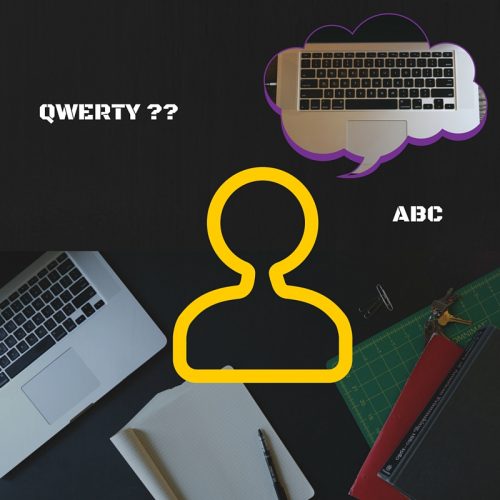Handwriting vs. Keyboarding is a hot topic these days. If someone asked me, “When was the last time you wrote a letter?” I would think for a while and would likely reply “Who writes today? Everyone has an email today. I would prefer an email!” The story seems familiar to everyone. Isn’t it? Everybody has an email address, social media accounts and a handy smart device that can print anything that a person needs to say. Email conversations are very common among professionals, friends, colleagues and family members. Invitations are changed to ‘Evites’, mails are changed to ‘Emails’ and so on. Faster! Easier!
If you are in the 30+ age range, you likely can recall a time before typing, the internet and social media. “Back in my day, we wrote letters,” which is so true, but now with all the conveniences of the internet we are able to write and communicate so much easier. While most of us are familiar with typing an email, typing a status update on social media or typing a report for school, we might not have thought about our children using the computer for school assignments.
As we are moving to a more digital world our children are also expected to use computers for their learning. For some children this is an easy process, and they are able to seamlessly transfer their knowledge onto a computer. For others, this can be very difficult. Many schools are using smart devices and a variety of educational applications for students. While this allows for additional methods of teaching children, it might also pose for additional struggles.
There are so many computer based programs for children today, some of which can be a great asset for children’s learning, while others are just for fun and do not provide much of an educational value. With the increased importance of typing in schools, we need to know how to type properly and how to move our fingers on the keyboard.
Typewriting is becoming an integral skill among children!
Typewriting is becoming a significant need among students!
Typewriting is becoming a standard expectation as a skill from everyone!
 Typewriting is not as easy a task as it looks like. You need to remember the not-so-alphabetically scattered letters and symbols on the keyboard. You need to have bilateral coordination in synchronization with your eyes. You need to have the ability to press the keys with appropriate force, and also an excellent tactile sense to move the ‘mouse’ finger on the plane-surface in coordination. Moreover, you should have the ability to sit for the whole time in front of the computer and even develop the work-rest ratio. And even if you have the physical abilities, you also need to have cognitive skills to determine a speed of typing, identifying any errors occurring in the sentence formations or coordination between eyes and typing fingers to copy anything through readable or audible sources. And these skills are still counting.
Typewriting is not as easy a task as it looks like. You need to remember the not-so-alphabetically scattered letters and symbols on the keyboard. You need to have bilateral coordination in synchronization with your eyes. You need to have the ability to press the keys with appropriate force, and also an excellent tactile sense to move the ‘mouse’ finger on the plane-surface in coordination. Moreover, you should have the ability to sit for the whole time in front of the computer and even develop the work-rest ratio. And even if you have the physical abilities, you also need to have cognitive skills to determine a speed of typing, identifying any errors occurring in the sentence formations or coordination between eyes and typing fingers to copy anything through readable or audible sources. And these skills are still counting.
Now decide! Is keyboarding easy? Of course, not for the kids who are learning, who are developing those skills and who are grasping just everything from everywhere!
And as I always believe, the barriers are made to be broken. But how?
If your child is not transiting to keyboarding as easily as you expected, there might be some underlying skills that require some additional help. Training from a scientific perspective and a professional who knows all these obstacles and their developmental progression in depth could help you the best. An occupational therapist is uniquely qualified to help teach children the skills needed for keyboarding. An occupational therapist helps the child to develop synchronized finger movement on the keyboard, the ability to sit for the task with appropriate attention, as well as improved concentration. Occupational therapists are experts in breaking down a task to identify which parts might be difficult. Occupational therapists are also trained in child development and know how to help children move ahead with a variety of skills. Occupational therapists also use scientifically proven step-by-step tasks to promote continuous compliance for typewriting.
OT would help you to develop or to modify the typing skills.
OT is there to help you type the best possible way you can.
OT helps teach foundational skills required for typing.
OT can help children demonstrate their knowledge in a computer based format.
While there are many great programs out there to teach typing, one of our favorites is the new Keyboarding Without Tears. This program was designed by an occupational therapist and has so many features that have been designed to support learning and children’s developmental progression.
Many people are familiar with the “handwriting without tears” program which has become a highly sought out handwriting curriculum to help children with their writing skills. They have recently released their new curriculum for teaching keyboarding skills. While this is still a brand new program and many people have not heard about it, we have been using it in our clinic and have been very happy with the results. Just like with the handwriting program, the keyboarding program focuses on fundamental skills to teach good habits from the beginning.
In today’s education system it is important for children to have a strong understanding of both handwriting and keyboarding skills so they can be successful. Many people might argue the importance of one over the other, but both are equally important, and each teach important physical, academic and social skills.
If you feel your child is having difficulties with transitioning to handwriting or keyboarding, make sure to seek help for them early so they do not fall behind. While an occupational therapist can help teach many important skills required for both, if you don’t feel you need skilled therapy at this time, check out the Handwriting Without Tears website. There you can find lots of wonderful details about the products they offer. You can also find the products we use on our website store! Purchasing through us does not cost you anything extra, but it provides funds to our JLD Cares Scholarship Fund, which helps to pay for services for families who cannot afford the therapy they need.
